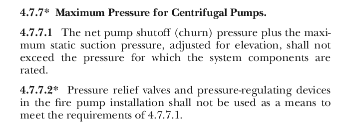b7031719
Electrical
- May 23, 2018
- 19
If I wanted to size a regulator that is to be installed in bypass around a pump i.e. back-pressure regulator and I know the desired back-pressure how do I determine the size of the valve based on the pump curve?
Follow along with the video below to see how to install our site as a web app on your home screen.
Note: This feature may not be available in some browsers.

